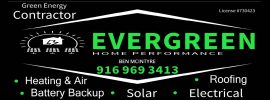Solar energy is transforming the way we think about electricity. With rising concerns over fossil fuel consumption and climate change, more homeowners and businesses are turning to renewable energy solutions. But many still wonder: how do solar panels work? Understanding the basics of solar technology helps demystify this powerful, eco-friendly source of power. Let’s dive into the science, the process, and the impact of solar power on modern energy systems.
How Solar Panels Work: The Basic Science
At the heart of every solar power system lies a fascinating process—photovoltaics. Simply put, solar panels convert sunlight directly into electricity. They do this using photovoltaic (PV) cells, typically made from silicon.
Photons Meet Silicon
When sunlight hits a solar panel, photons (light particles) collide with the PV cells. This excites the electrons in the silicon material, knocking them loose. These free electrons then flow through the cell, generating an electric current. This process is known as the photovoltaic effect, first discovered in 1839 by physicist Edmond Becquerel.
Direct Current (DC) Generation
The electricity produced by solar panels is direct current (DC). However, most homes and electrical grids use alternating current (AC). This brings us to the next vital component of any solar system—the inverter.
The Role of the Inverter in Solar Energy Systems
An inverter is the silent hero in a solar panel system. It converts DC electricity into AC electricity, making it usable for household appliances, lights, and electronics.
Types of Inverters
-
String Inverters: Common in residential installations. A single inverter handles all panels.
-
Microinverters: Installed on each panel, allowing for more efficient energy conversion and individual panel monitoring.
-
Hybrid Inverters: Combine solar energy with battery storage capabilities.
A well-functioning inverter ensures your solar panel system is compatible with your electrical needs and can even feed excess energy back into the grid.
Components of a Solar Power System
To understand how solar panels work in practice, it’s helpful to look at the key components of a complete solar energy system.
| Component | Function |
|---|---|
| Solar Panels | Capture sunlight and convert it into DC electricity |
| Inverter | Converts DC to usable AC electricity |
| Mounting System | Holds panels in place on rooftops or ground installations |
| Battery Storage | Stores excess energy for nighttime or cloudy days |
| Charge Controller | Regulates energy flow to batteries |
| Electrical Panel | Distributes electricity to the household grid |
Each piece plays a crucial role in ensuring smooth, efficient solar energy conversion and use.
Solar Panel Efficiency and Performance Factors
Not all solar panels perform the same. Their efficiency—the amount of sunlight they convert into usable electricity—depends on several factors.
Material Type
-
Monocrystalline Panels: Highly efficient, made from single-crystal silicon.
-
Polycrystalline Panels: Slightly less efficient but more affordable.
-
Thin-Film Panels: Lightweight and flexible, but generally the least efficient.
Environmental Conditions
-
Sunlight Intensity: More direct sunlight = more energy.
-
Temperature: Solar panels perform better in cooler temperatures.
-
Shading: Even a small shadow can significantly reduce output.
Proper installation and system design can optimize performance even in less-than-ideal conditions.
Grid-Tied vs. Off-Grid Solar Systems
Solar panel systems can be set up in two primary configurations: grid-tied or off-grid.
Grid-Tied Systems
These systems remain connected to your local power grid. If your panels produce more electricity than you use, the excess is sent to the grid—often earning you credit through net metering.
Off-Grid Systems
These operate independently and require battery storage. Perfect for remote areas, off-grid systems provide full energy autonomy but can be more complex and expensive to maintain.
What Happens on a Cloudy Day?
Solar panels still work even when the sun isn’t shining at full force. They generate electricity using diffused sunlight, meaning even cloudy or rainy days can yield energy—just at a reduced rate.
Solar Storage Solutions
Battery systems like the Tesla Powerwall allow you to store excess energy for later use. This ensures a consistent power supply, even when sunlight is minimal.
Environmental Benefits of Solar Energy
Using solar energy has profound positive impacts on the environment.
-
Reduces Carbon Footprint: A typical residential solar system offsets tons of CO₂ annually.
-
Minimizes Air Pollution: Solar power reduces reliance on fossil fuels, lowering emissions.
-
Saves Water: Unlike traditional power plants, solar doesn’t require massive amounts of water for cooling.
Going solar isn’t just smart—it’s sustainable.
How Solar Energy Saves Money
Switching to solar can significantly reduce or even eliminate your electricity bill.
Initial Investment vs. Long-Term Savings
Though solar panel installation involves upfront costs, most users break even within 6–10 years and continue to enjoy decades of savings afterward.
Incentives and Rebates
Many governments offer tax credits, rebates, and grants to encourage solar adoption. These incentives make solar more affordable than ever.
FAQs
How do solar panels work at night?
They don’t generate electricity at night. However, stored energy in batteries or grid connection ensures continued power.
Can solar panels power a whole house?
Yes, with a properly sized system and storage, solar panels can power an entire household.
How long do solar panels last?
Most panels come with 25–30 year warranties and can last even longer with proper maintenance.
Are solar panels expensive to maintain?
No, they require minimal maintenance, primarily periodic cleaning and occasional checks by a professional.
Do solar panels work during the winter?
Yes, though shorter days and potential snow coverage may slightly reduce output.
Is it worth going solar if you live in a cloudy area?
Yes, modern panels can still generate electricity in low-light conditions, though overall output will be lower.
Conclusion: Is Solar Power Right for You?
Understanding how solar panels work empowers you to make informed decisions about your energy future. From the physics of photons to the practical benefits of electricity savings, solar panels represent a clean, cost-effective energy solution. As technology improves and incentives grow, more people are harnessing the sun’s power—proving that solar isn’t just a trend, but a smart investment in a brighter tomorrow.



